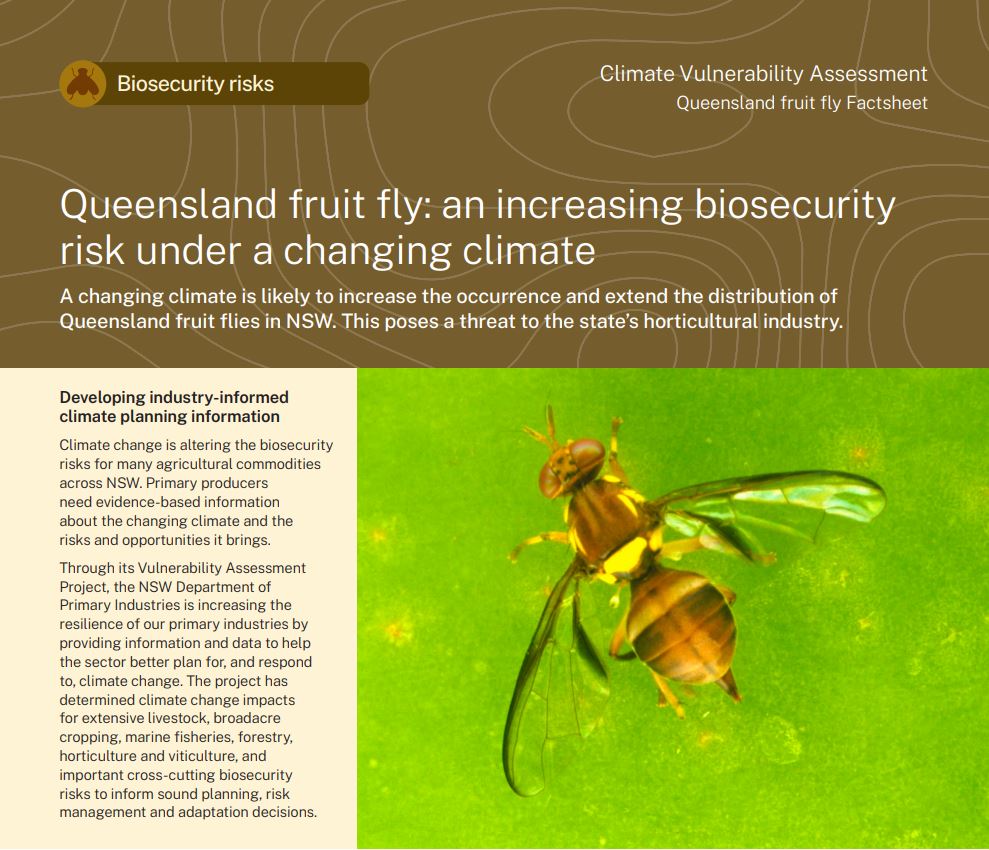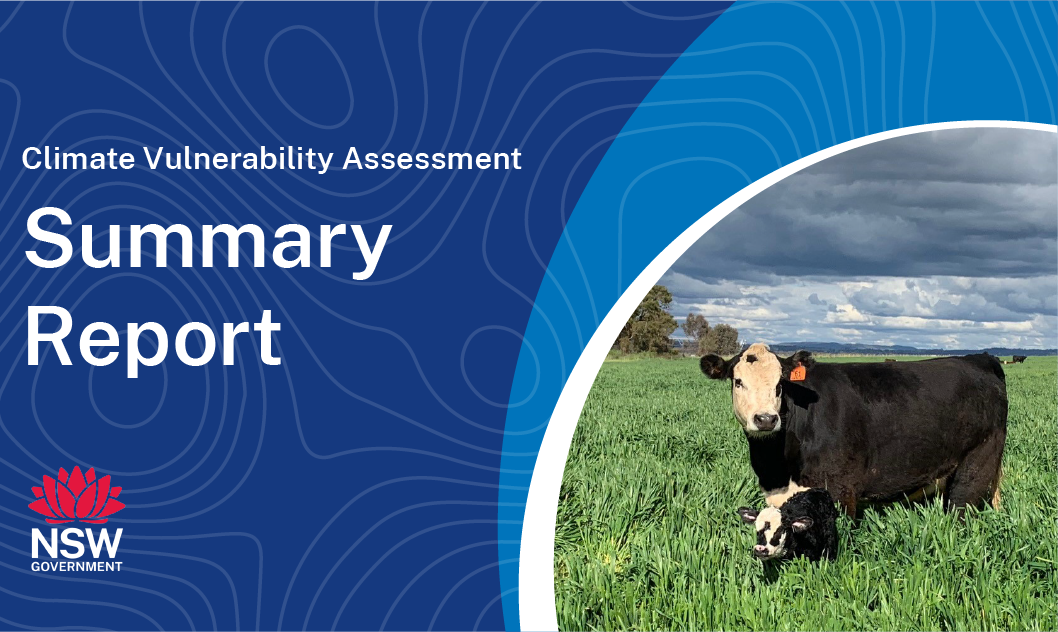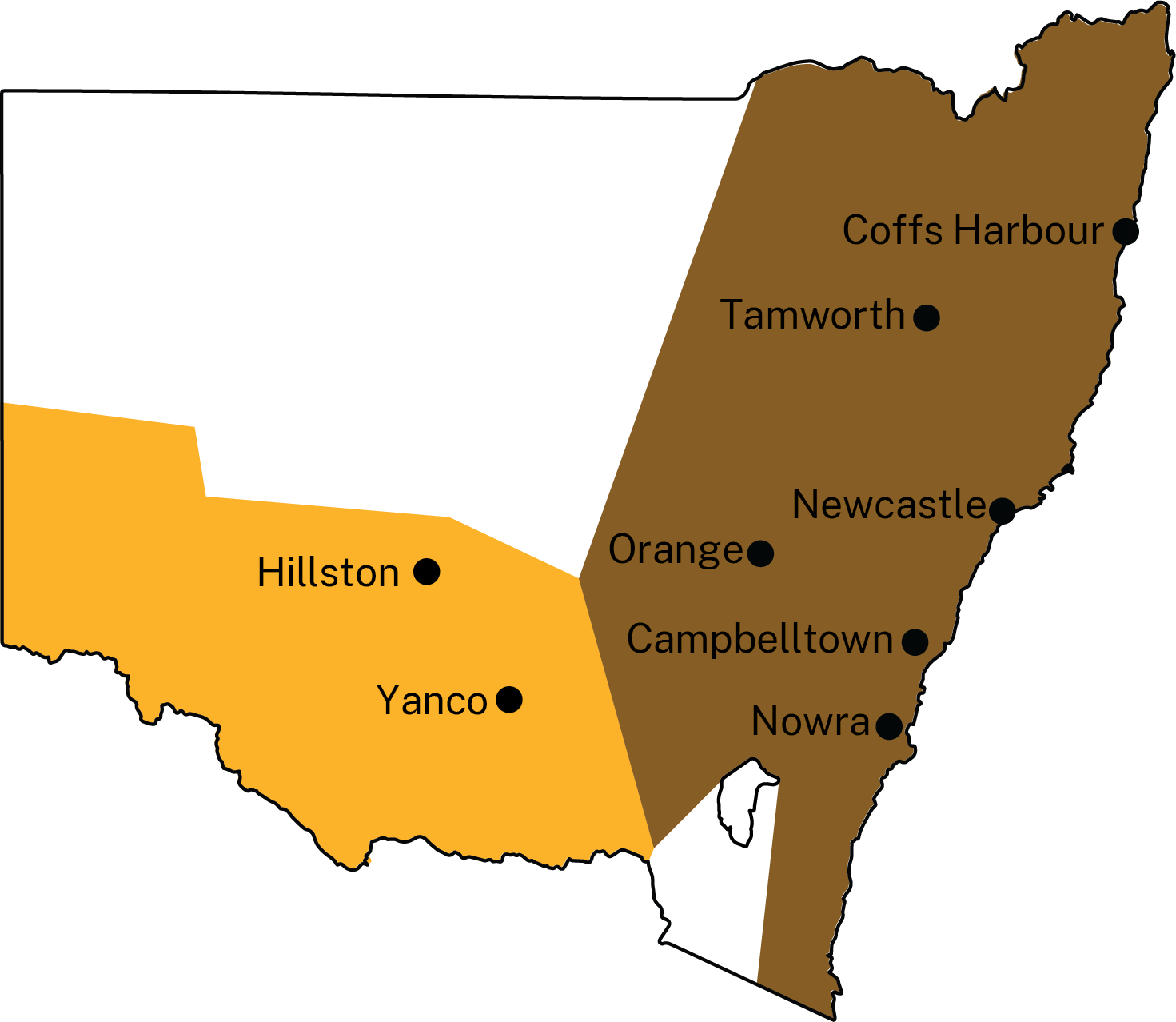What is the NSW DPIRD Climate Vulnerability Assessment? ⏷
Climate change is altering the biosecurity risks for many agricultural commodities across NSW. Primary producers need evidence-based information about the changing climate, and the risks and opportunities it may bring.
The NSW DPIRD Climate Vulnerability Assessments are enhancing the resilience of our primary industries by providing information and data to help the sector better plan for, and respond to, climate change. They have assessed climate change impacts for extensive livestock, broadacre and irrigated cropping, marine fisheries, forestry, horticulture and viticulture, and important biosecurity risks associated with these industries to inform sound planning, risk management and adaptation decisions.
How we assessed climate suitability ⏷
Climate projections were sourced from Climate Change in Australia’s ‘Application Ready Data’. This dataset is comprised of projections from an ensemble of 8 global climate models, each presenting a plausible future climate. Low confidence in the projected changes due to differences between the models is noted in the text. Care should be taken when interpreting these results.
The Climate Vulnerability Assessment is intended to highlight potential industry- or regional-level changes. Intermediate and high emissions scenarios were used in the assessments (RCP4.5 and RCP8.5), but these are not the only future scenarios possible. The inclusion of climate variables important to the commodities production was based on published research, expert knowledge and data quality and availability.
Climate suitability was assessed on a monthly timescale, with the reported climate suitability representing the average for a given month over all years in the dataset. This reflects the pattern of life stages for Queensland fruit fly and the need to determine which months are likely to pose the greatest risk to host commodities.
Learn more in the Climate Vulnerability Assessment Project Framework.
Climate impacts: expected challenges for primary industries
Changes in climate suitability are likely across all key life stages of Queensland fruit fly by 2050, under both emission scenarios.
Changes to overall monthly climate suitability affect Queensland fruit fly in NSW in different ways:
- April to October – there are likely to be minimal to moderate increases in climate suitability in both regions. The increases are likely to be greatest under the high emissions scenario (moderate to high confidence).
- November – there are likely to be minimal to moderate increases in climate suitability in the eastern region. The increase is likely to be greatest under the high emissions scenario (moderate to high confidence).
- January – there are likely to be minimal decreases in climate suitability in the western region. The decrease is likely to be greatest under the high emissions scenario (moderate to high confidence).
- February, March and December – Climate suitability in both regions is expected to remain similar to what has been historically experienced under both emissions scenarios (moderate to high).
The effects of Queensland fruit fly on horticultural industries in NSW will depend on:
- the future distribution of those industries,
- changes in production timings, and
- the overlap between susceptible life stages of commodities and the lifecycle of Queensland fruit fly.
Increased suitability under a warmer climate is likely to lead to greater impact of Queensland fruit flies on horticultural industries in NSW. Climate suitability is likely to increase along the Great Dividing Range from the Queensland border to southern NSW during September, due to higher mean and minimum temperatures during winter. This could result in fruit flies being active before the commencement of surveillance and so monitoring and surveillance programs in 2050 may need to start earlier than now.
Current strategies to manage the pest are likely to remain effective but treatment costs are likely to increase as warmer temperatures and changes in rainfall support the southward and inland spread of Queensland fruit flies. Due to the large number of potential hosts and large area potentially affected, industry may need to consider broad reaching Queensland fruit fly education programs to raise awareness of the risks and management strategies.
Where can I find the climate suitability maps?
Maps of historical and future climate suitability for commodities were produced to demonstrate where in the state a commodity is likely to thrive or else be limited by future climatic conditions. The maps are not provided on these webpages but can be found in the Climate Vulnerability Assessment Summary Report (PDF, 41425.92 KB).
Queensland fruit fly Factsheet
(PDF, 262.96 KB)

Summary Report
(PDF, 41425.92 KB)

